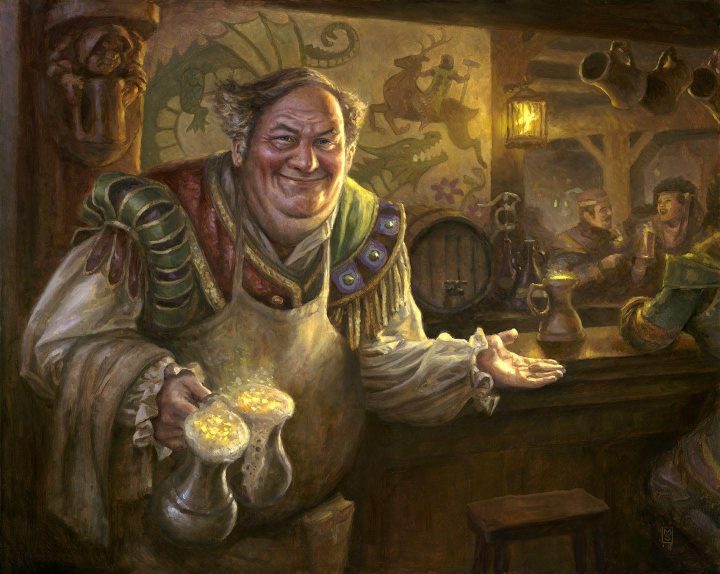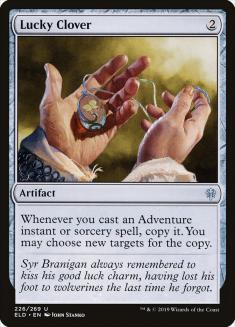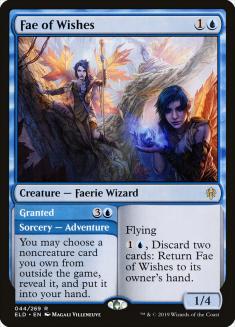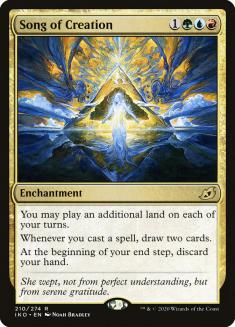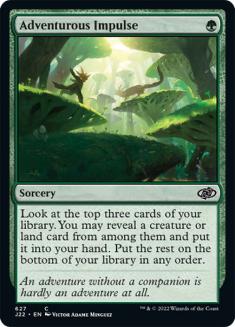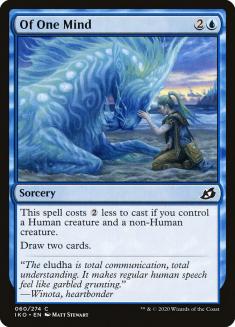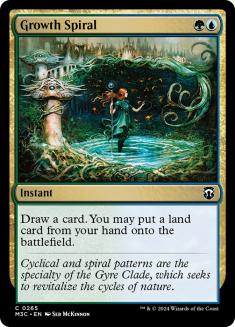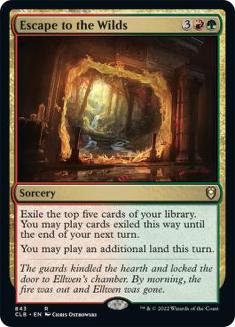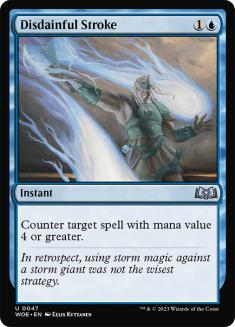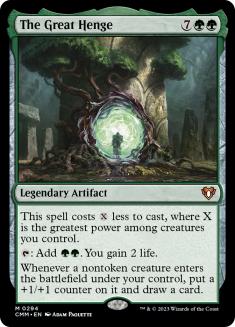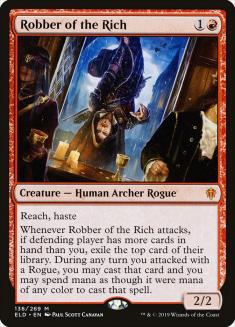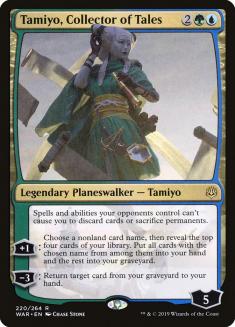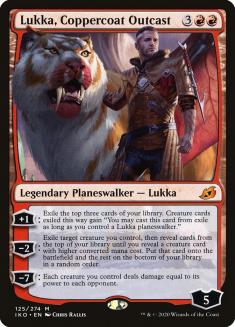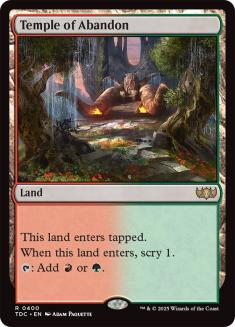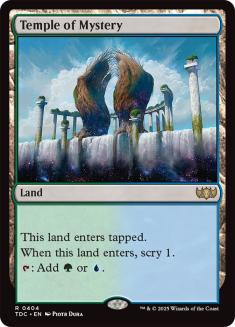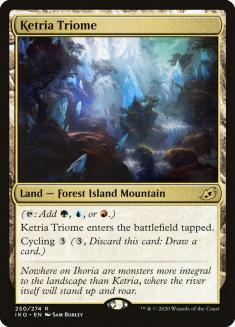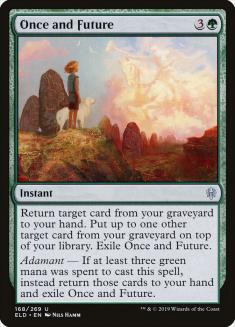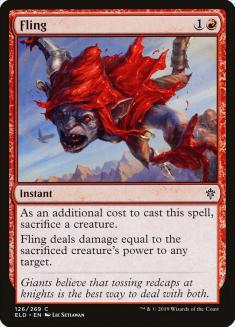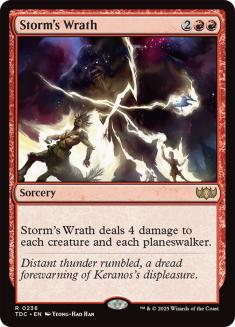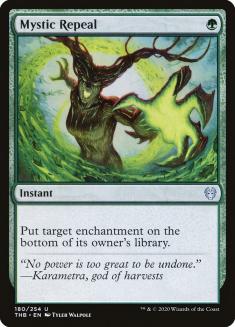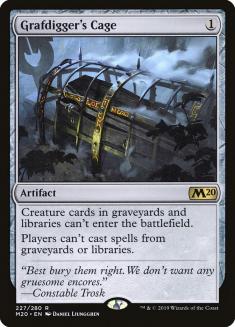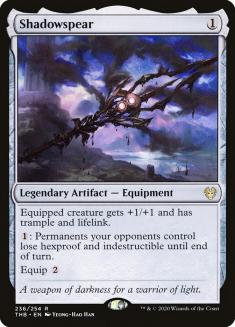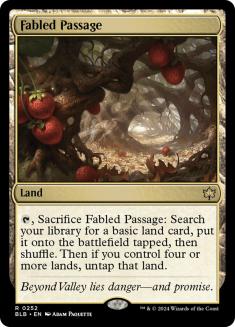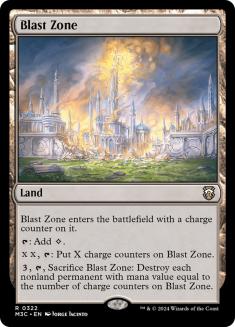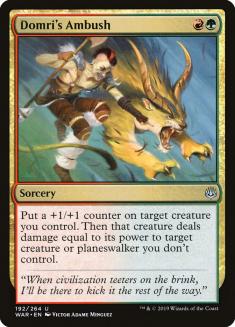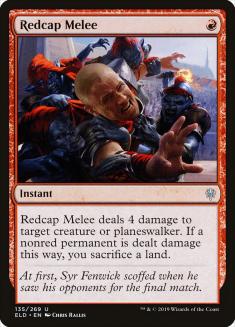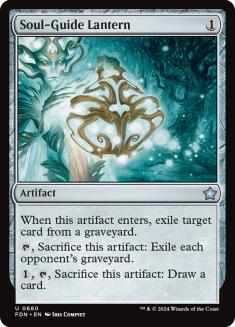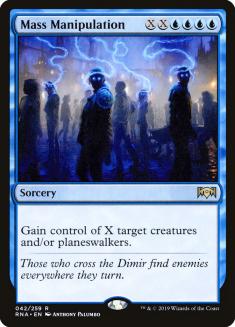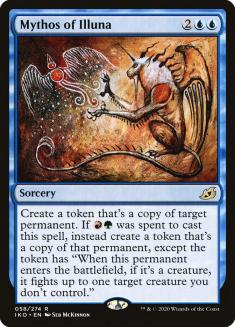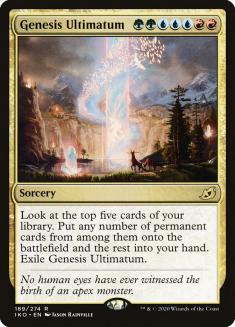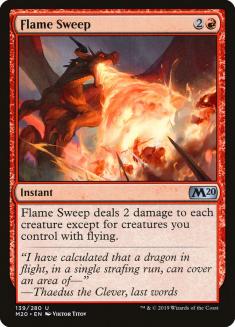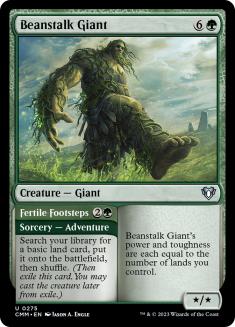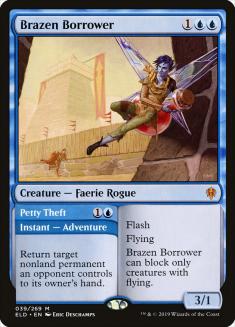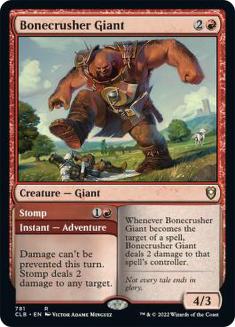Temur Adventures is a lot of things. It’s weirdly inflexible on a deckbuilding level, whilst being extremely flexible in play patterns: some games play out like a tempo deck, invalidating your opponent’s threats whilst you sneak under them, and other games like a midrange deck where you out-value and out-draw your opponent, whilst Granted lets you play the role of a control deck too, picking apart your opponent’s options and avenues to victory one by one so that your late-game can reign supreme.
It’s an extremely fun deck, in no small part due to the manner in which mapping out your turns can be so complicated. Some turns will have decision trees with literally thousands of distinct outcomes:
It sounds like a lot to process, intimidatingly so, and in some ways it is, but so often there will be multiple different roads to victory, which starts to give the games a Choose-Your-Own-Adventure feel where you’re given the freedom to explore different options, thinking thoroughly in some spots and just following your instincts in others. At its best, it’s exhilarating to play.
As of recently, it has also started winning again:
Creatures (24)
- 4 Lovestruck Beast
- 4 Beanstalk Giant
- 4 Edgewall Innkeeper
- 4 Bonecrusher Giant
- 4 Fae of Wishes
- 4 Brazen Borrower
Lands (16)
Spells (20)

Not only did Jason Fleurant win the MagicFest Online Season 2 Finals last weekend with Temur Adventures, but a week earlier I was surprised to find out that not only was I not the only person piloting Temur Adventures in Day 2 of the MagicFest Online Season 2 Weekly, but that one of the two other pilots of the archetype in Day 2, Rivals competitor No Ah Ma, would go on to make the Top 4 with his version of the archetype. It seems like Temur Adventures deserves a lot more respect than we’ve collectively been giving it.
Why Not Play Song of Creation?
This is a question I heard a lot at first when people saw me streaming Temur Adventures again. Song of Creation was one of the most-hyped cards in Ikoria: Lair of Behemoths before the release of the set, and a lot of people were really excited for it to see play in Temur Adventures where the Adventure creatures being safe from this enchantment’s discard clause would ensure you had spells ready to cast every turn to start drawing cards off Song of Creation.
So, why was Song of Creation such a flop in this deck?
A lot of Temur Adventures’s strength comes from the same thing that makes the deck so complicated: you often have so many lines available to you that you’ll be able to find one that suits the situation at hand. Your deck might not be doing things that are as objectively powerful as the things your opponent is doing, but with so many options your best possible path on the decision tree is more often than not going to pull you ahead. When you have a Song of Creation on the battlefield, suddenly so many of those options you’ve been working to open up are shut to you and you’re left hoping that hurling cards from the top of your deck onto the table in any old order is going to be enough to overpower your opponent. The games that adding Song of Creation to your deck encourages are the antithesis of what makes Temur Adventures so good.
So people added Song of Creation to their Temur Adventures decks, their win-rates dropped a lot, and everyone wrote off the deck as underpowered in the world of Ikoria Standard rather than just returning to playing the deck as it was before. Now that people have returned to building Temur Adventures without Song, the deck has started to return to being relevant.
How to Build Temur Adventures
Temur Adventures is a strange deck in that, for as much flexibility as you have with how you play the deck, you’re actually pretty restricted with how you build it. Your maindeck is a tight package of playsets of the most versatile and synergistic cards you can put in the deck, and then two flex slots, whilst your sideboard mostly consists of your Granted Wishboard. You have very few details you can actually change, but because you draw such a huge chunk of your deck in most games and have access to your sideboard even in Game 1, the flip-side is that those small details can have a large impact.
The deck being such a tight, inter-woven package like this is a part of what gives it so much strength, but it’s also a part of why you can’t really salvage any truly bad matchups that pop up; you could add six sideboard cards to help fight Temur Reclamation and attempt to turn that matchup from awful into just slightly unfavourable, but in doing so you upset so many scenarios in so many other matchups that it feels pretty detrimental to even try.
By my reckoning I consider these 65 cards to be close to untouchable:
Creatures (24)
- 4 Lovestruck Beast
- 4 Beanstalk Giant
- 4 Edgewall Innkeeper
- 4 Bonecrusher Giant
- 4 Fae of Wishes
- 4 Brazen Borrower
Lands (14)
Spells (18)
Sideboard

In addition to this core, you get to personalise your list with two maindeck spells, two more lands, and then the remaining six sideboard cards. This is partially about tuning your list to the metagame, figuring out what decks you want to prioritise being prepared for, but also making the deck line up with how you like to play it. Where the deck offers such a wide number of lines to its pilots, any two players are likely to diverge in their approach with playing the deck at some point, so having your flex spots be personalised to how you play the deck in some of the more complicated situations only makes sense. Be willing to experiment, try out different options, and find the ones that work for you.
These are the three options for your maindeck flex spots that I can actively endorse. The one I’ve played with the most personally is Growth Spiral, which I’m drawn to because it helps you make meaningful plays on Turn 2 a bit more consistently, allowing you to do something powerful on this early turn of the game even if you haven’t had a start featuring Lucky Clover, Edgewall Innkeeper into Fae of Wishes, or Stomp in the matchups where that is so potent. In addition, when you draw a bunch of powerful two-mana plays, Growth Spiral can represent a really impactful Turn 2 by setting up four mana sources to deploy a Lucky Clover and a two-mana Adventure spell on the third turn of the game. Growth Spiral never does anything broken in the deck, but it’s very good at raising the deck’s floor, which I see as the most important feature of these flex spots.
Adventurous Impulse and Of One Mind are different takes on the same concept, namely stating that the Adventure creature package is so inherently strong that it doesn’t need outside assistance and you’d rather your flex spots just draw you into more of the same. Adventurous Impulse is the humble version of this, focused on making sure the opening few turns play out as consistently as possible by ensuring you don’t miss early land drops and do have some Adventure creatures to cast, whilst importantly giving you extra looks at an Edgewall Innkeeper that can define the early-game when you have it. Months ago, before Ikoria, Temur Adventures would sometimes play Incubation in its flex spots for similar reasons, but Adventurous Impulse being able to find lands is a huge upgrade; you don’t want to ever miss a land drop with Temur Adventures, but especially so on Turn 3.
Of One Mind is much worse at finding those early Innkeepers or helping you find your third land drop, but it’s very easy to cast for one mana in this deck with Lovestruck Beast notably enabling the cost reduction singlehandedly. In a deck that’s all about taking advantage of the sheer number of options you have, a cheap draw-two effect naturally increasing your options is very appealing, and it’s easy to fit into your curve.
Something else you can do with these flex spots is fit in the fourth copy of Escape to the Wilds. This card should ideally be somewhere in your 75, and most people run it in the sideboard to Granted for, but drawing them naturally can be pretty appealing as having an Escape in hand is the best possible way to punish counterspell-heavy decks for tapping out to answer your battlefield with a card like Shatter the Sky. Along similar lines I love casting Escape on the turn that I untap with five lands already on the battlefield, as it lets me accelerate my mana development so that I can use more mana every single turn for the rest of the game, but it’s hard to have resolved Granted for a sideboard Escape to the Wilds this early in the game, as you’ll have often been focusing on battlefield development instead.
The downside to playing this fourth Escape maindeck is it won’t be in your sideboard to Wish for in the late-game, and whilst you can sideboard other card advantage haymakers instead like Genesis Ultimatum, none of them are quite as good as Escape is.
These are the other options I most often see in the maindeck flex spots, all of which I’m not really fans of. Disdainful Stroke and Mystical Dispute are probably the two most justifiable options if you’re expecting the metagame to look various ways — and Mystical Dispute in particular starts to look pretty appealing if you’re confident that there will be a lot of opposing blue decks and almost no aggressive decks — but drawing these cards in the matchups where they’re bad can have a pretty serious cost in this deck, so you need to be very confident in what decks you expect to face.
Cards like The Great Henge or planeswalkers are all very unappealing to me. They’re pretty low-synergy in the deck, are generally at their best when you already have a good battlefield presence and thus are already likely doing reasonably well regardless, and all line up very poorly against Elspeth Conquers Death. The Great Henge is the worst of these, as not only does it have all these problems, any artifact hate your opponent brings in to answer your Lucky Clovers will also incidentally kill your expensive permanent.
I think Robber of the Rich is trying to solve the same problem that Growth Spiral is trying to solve, namely increasing the consistency with which you are doing something impactful on the second turn of the game. Robber is much worse at this job than Growth Spiral, however, and its ability feels pretty awkward in this deck considering how many cards you’ll draw in some games.
The final two spots in your maindeck go towards two more lands. Ketria Triome really helps your coloured mana be more consistent in a deck that will often have turns with some intense colour requirements, though Temur Adventures is so mana-hungry and desires hitting its land drop every single turn such that the cycling is a bit less exciting here than it might be in some other decks. The scrying on the Temples is most notably helpful for ensuring you don’t miss your third land drop when you keep a two-land hand, so I can definitely see the appeal, though I tend to prefer the upsides to the Triome instead. I also think it’s very reasonable to play just the one additional Triome to make room for an extra basic land in the manabase so that you can have more untapped mana sources, and am surprised I don’t see people try this more often.
Like I said earlier, there are nine compulsory sideboard slots, so before we get to the flex spots lets understand why everything that’s here is here already. Disdainful Stroke and Negate are your counterspells, allowing you to prepare for cards that might be hard to trade with reasonably should they resolve; honestly Disdainful Stroke covers almost everything that would qualify as scary here, except the existence of Teferi, Time Raveler forces you to play Negate regardless so that you can stop him from resolving too.
Once and Future serves a number of purposes, providing card advantage and flexibility to you, but its most common function is allowing you to recur multiple counterspells against opponents thus locking them out of resolving spells for a few turns in a row even. With this in mind you’ll sometimes preemptively grab the Once and Future from your sideboard even if you don’t intend to cast it until the Disdainful Stroke in your hand has been cast first.
Fling is a unique form of inevitability, allowing you to end games suddenly even if you’re fairly far behind in some regards. Expansion//Explosion will very occasionally be cast as a card advantage spell or source of removal with its Explosion half, but most often you’re casting Expansion instead either to rebound an opponent’s counterspell back on itself or to copy a copy of Fling. If your opponent’s life total is high, then copying Fling can represent enough damage to kill them outright, whilst if a single copy of Fling would kill them, then Expansion lets you copy the Fling in response to your opponent’s Dovin’s Veto, essentially letting you ignore their otherwise uncounterable counterspell. You’ll often search out this pair of cards the turn before you intend to cast them, intending to cast and hurl a Beanstalk Giant at your opponent once you’ve untapped.
Storm’s Wrath is the sweeper of choice since it can take down planeswalkers too, and in combination with Expansion you can even remove a card like Dream Trawler or a particularly loyal planeswalker.
The final three compulsory slots. Mystic Repeal is needed as the most efficient answer to a Fires of Invention or Wilderness Reclamation (though you also find it to remove Elspeth Conquers Death surprisingly often); Grafdigger’s Cage is an excellent card against Lurrus of the Dream-Den and Gyruda, Doom of Depths decks; and Shadowspear is an excellent source of lifegain in a deck with such large creatures, lets you trample through creatures sacrificed to Witch’s Oven, and most curiously lets you remove hexproof from opposing Dream Trawlers so that you can actually interact with them.
Covering every possible option for the final six slots is far beyond the scope of this article, so instead I’m going to just cover the ones I’ve settled on and a few of the more popular ones that I’m not playing myself.
I think you should absolutely be playing a land in your sideboard to Granted for, and am sad how few people actually do this. There are just so many situations where you have a Lucky Clover on the battlefield and want to cast, say, a Storm’s Wrath via your Granted this turn, but you only have seven lands, and being able to use one copy of Granted to grab the Wrath whilst the other copy grabs that eighth land can just feel incredible in spots like this. More generally, when you have multiple Lucky Clovers on the battlefield then mana will be your main limitation rather than raw card quantity, so grabbing a land will just be way more appealing than grabbing the second or third spell in spots like these, and sometimes you’ll just Granted for a land in the early-game to make sure you hit your fifth land drop for the Escape to the Wilds you want to cast next turn, or to make sure you have enough mana to hold open a counterspell whilst you develop your battlefield.
I’ve seen Blast Zone be played in this spot, though the utility this offers the deck has always felt pretty minor compared to how Fabled Passage can help fix your mana. I’ve had times where I only have Izzet mana, or Simic mana, and that sideboard Fabled Passage being able to get my third colour online has been crucial.
Domri’s Ambush is my removal spell of choice. It’s a bit awkward in that it requires you to already have a creature on the battlefield, but is also much more versatile than other options provided you have maintained a battlefield presence, and the +1/+1 counter can be surprisingly relevant for helping you take down multiple planeswalkers out of nowhere.
Other options include Redcap Melee if you’re expecting a lot of Mayhem Devils, Unsummon if you’re scared of late-game Shark Typhoons or rampant Flourishing Foxes, and Fry as a more reliable answer than Ambush to an opposing Teferi, Time Raveler or Narset, Parter of Veils. Aether Gust is a lot worse now than it used to be, most notable for its ability to get an Uro, Titan of Nature’s Wrath off the battlefield. Wilt has felt unnecessary to me as there aren’t many artifacts I care about (but that could change if we start to see more Temur Adventures mirror matches), and whilst Scorching Dragonfire is good against Anax, Hardened in the Forge, I generally consider matchups featuring that card to already be quite favourable for us.
This is tech against the Boros/Jeskai Cycling decks specifically. You wish for it proactively, put it on the battlefield, and just let it sit there, daring your opponent to cast a Zenith Flare whilst you have the ability to get rid of their entire graveyard in response should they actually do this.
These are the most popular options for haymakers you can run in your sideboard. If you already have the fourth Escape to the Wilds in your sideboard instead of your maindeck, then Genesis Ultimatum is redundant, and I find it hard to make room for a card like Mythos of Illuna in my sideboard as it doesn’t actively solve any problems the deck has. Mass Manipulation fights for my fifteenth sideboard slot with Flame Sweep, and despite having all the subtlety of a sledgehammer, it helps you steal games where you’ve fallen far behind to a collection of opposing planeswalkers or such. Thanks to cards like Neutralize, a lot of these planeswalker-heavy decks are much more prepared to counter an expensive sorcery like this than they’ve traditionally been, so I’m not certain it’s the tool you want right now, but it’s certainly powerful.
Finally, Flame Sweep is potent when decks like Mono-Red Obosh are picking up popularity, where costing one less mana than Storm’s Wrath can be crucial and leaving your Bonecrusher Giants, Brazen Borrowers, and Fae of Wishes still alive in its wake can allow the sweeper to almost feel one-sided sometimes. All this brings my list to:
Creatures (24)
- 4 Lovestruck Beast
- 4 Beanstalk Giant
- 4 Edgewall Innkeeper
- 4 Bonecrusher Giant
- 4 Fae of Wishes
- 4 Brazen Borrower
Lands (16)
Spells (20)

As far as mulliganing with this deck is concerned, I am much more inclined to keep a hand if it has Edgewall Innkeeper, Lucky Clover, Growth Spiral, or Lovestruck Beast. It sounds weird to call out Lovestruck Beast specifically here, but it’s strong enough to potentially run your opponent over, especially if you’re on the play, whilst also playing very well on both offence and defence, thus offering you a lot of play regardless of what you’re up against.
If your hand doesn’t tick any of these boxes, you have to ask yourself if your hand is doing something powerful in the matchup. Four untapped lands, a Ketria Triome, and a pair of Bonecrusher Giants make for a pretty bad hand in the dark since you’re not really doing anything inherently powerful, but if you know you’re up against a deck where Stomp is particularly good, suddenly you can start to make an argument for keeping this hand. A hand of Escape to the Wilds, a pair of Beanstalk Giants, and four lands will be much too slow against most decks, but if you know your opponent’s deck is controlling and grindy, then a hand like this becomes more defensible.
All that said, don’t be afraid to take that first mulligan if you can’t find a compelling reason to keep your opening seven; a hand of five lands, a Brazen Borrower and a Bonecrusher Giant isn’t beating anyone, and this deck is so good at generating card advantage that taking a fresh look for one of your busted enablers is often very worthwhile.
I’ve covered a lot of general mindset stuff when playing this deck throughout this article, but in general I think the two big tensions you will encounter will come down to developing your battlefield versus developing your mana, and taking on a proactive role versus taking on a defensive one.
This first tension comes down to a notion of maximising meaningful mana usage over the course of the game. Developing your mana as early as possible with cards like Fertile Footsteps and Escape to the Wilds will result in you using more mana every turn for the rest of the game, but only if you don’t make yourself vulnerable to opposing creatures that shorten the game and thus the number of turns you can use this extra mana, or opposing planeswalkers that invalidate a lot of what you’re doing and thus make your mana usage less meaningful.
To this end, your aim is to develop your mana as soon as possible without leaving yourself vulnerable to your opponent’s creatures pushing through, or to an opposing planeswalker coming down and taking over the battlefield; generally you have to prioritise your battlefield development just enough to not fall behind, yet not too much such that you slow down your mana development. It’s a tough balancing act to get right.
The second tension is going to come down to how you see yourself winning the game, which is partially a question of how much inevitability you feel like you have in the matchup, but also a question of what roles your hand lends itself best to. You naturally have inevitability against a deck like Obosh Mono-Red Aggro as your creatures are bigger and better than theirs, you have access to intense lifegain via Shadowspear, and you have much more card advantage, all of which would incline you to play defensively where possible.
That said, if they kill your early Edgewall Innkeeper and you don’t have access to a Lucky Clover, an Escape to the Wilds, or a Fae of Wishes yet, then winning through sheer card advantage could be challenging and, if it’s safe to do so, you may be best off swapping into a more proactive role trying to turn the tide more aggressively than you might otherwise with Brazen Borrower and Bonecrusher Giant beatdown. Recognise your role in a matchup, but also be willing to go against this to an extent if you get to better play towards your hand’s strengths as a result.
Sideboarding
The title of this section is a bit misleading, as the normal sideboard and matchup guide you’d expect at the end of these articles doesn’t really work here. You rarely sideboard more than one or two cards with a sideboard configuration like mine due to the nature of a Wishboard, at most occasionally trimming your flex spots for cards that are reasonable in a matchup but that you don’t ever expect to Granted for.
Similarly unconventionally, the deck plays out in a more fluid manner from game-to-game than any Standard deck I’ve played in quite a while, so concrete notions of how a matchup will play out won’t necessarily be of as much help to you as you’re used to. Instead, I’ll end with a guide of the cards you’re most likely to Granted for in some of the major matchups in Standard.
VS Yorion Jeskai Lukka
Disdainful Stroke counters almost every relevant card in their deck apart from Teferi, Time Raveler, whereas Negate counters almost every relevant card in their deck apart from Yorion, Sky Nomad. I lean towards prioritising Disdainful Stroke as long as Yorion hasn’t hit the battlefield yet, but Negate goes up in value as the game goes long. Once and Future recurs counterspells, whilst Mystic Repeal can answer Fires of Invention or Elspeth Conquers Death in a pinch.
VS Yorion Bant Control
Spiritually similar to how you Granted against Yorion Jeskai Lukka, except Bant offers you more breathing room, which makes Escape to the Wilds more appealing to grab.
VS Boros/Jeskai Cycling
Soul-Guide Lantern sits on the battlefield making your opponent unable to meaningfully resolve Zenith Flare, whilst Flame Sweep helps clean up tokens from Valiant Rescuer.
VS Temur Reclamation
You will likely have less time to recur the counterspells with Once and Future than you do in the other matchups where they shine. This matchup is awful, and you’d have to overhaul the list to really have a fighting chance, which is not worth it.
VS Obosh Mono-Red Aggro
VS Lurrus Rakdos Sacrifice
In both of the above matchups, you’re using Granted to keep their battlefield clear, break up any potent synergies, or start gaining life via Shadowspear to get yourself out of burn range.
I wish you luck on all these adventures that lie ahead of you!

